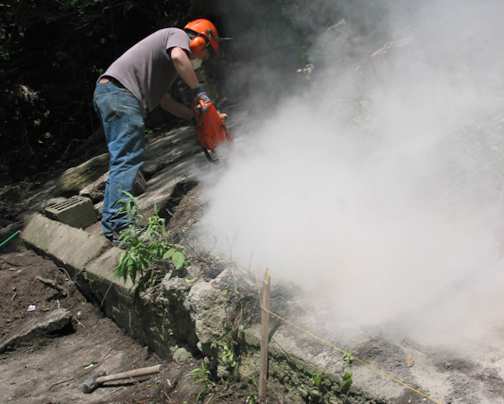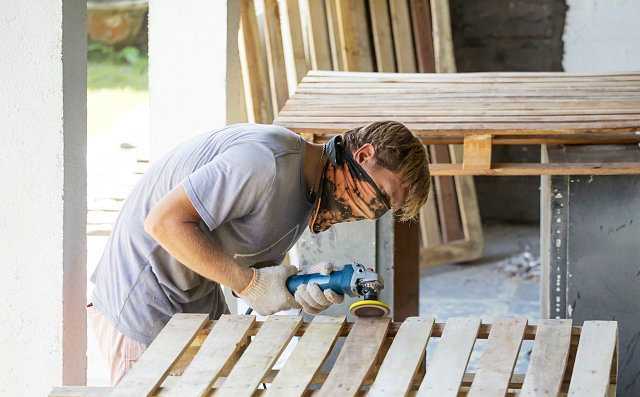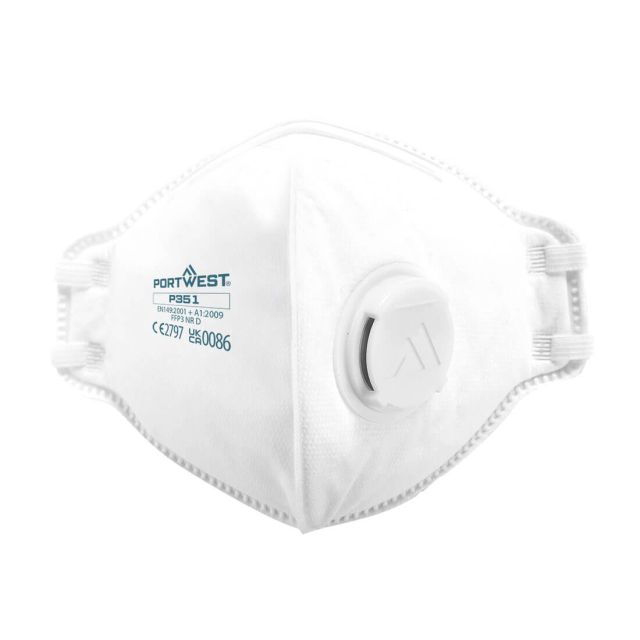Dust Mask Ratings: FFP1 vs FFP2 vs FFP3 - The Ultimate Guide
Here is everything you need to know about dust mask ratings - the same safety standards are used for respirator ratings and the specifications of face masks. After reading, you should know the different dust mask protection levels and the rating system used in respiratory PPE before you choose a dust mask for work.
You should also have a good idea of which dust mask or face mask rating you will require for the job you are doing and the dust protection you need.
- Page Contents
- What Is A Dust Mask For?
- The Safety Acronyms Used
- Why You Should Wear A Dust Mask
- When it comes to your health & safety, it is better to be safe than sorry.
- A quick guide to these three types of dust mask: ffp1, ffp2, ffp3 - the differences
- How to choose between mask ratings
- Maintenance of your respiratory protection
- Our pick of the best dust masks for work
- XAMAX®: Your Trusted Source for Dust Mask and Respiratory Protection
- Conclusion
What Is A Dust Mask For?
Silly question, but we need to start somewhere...
Disposable or half-face dust masks offer respiratory protection against particulate hazards and airborne particles like dusts (anything from wood dust to brick dust to household dusts), powders and aerosols (aka: Aqueous Fog). That is, they filter out bad stuff from the air you breath so you don't inhale poisons or hazardous dust particulates.
Dust masks are vital for a range of industries: construction, agricultural, pharmaceutical, and even for your DIY projects at home. The FFP1, FFP2, FFP3 ratings offer different levels of protection so it is vital you find the correct level of protection you need from a respirator.
The Safety Acronyms Used
Respiratory protection in the form of disposable dust masks come in three respirator ratings: FFP1, FFP2, and FFP3 - FFP stands for "Filtering Face Piece" and the number denotes the level of protection. Many people shorten these acronyms even more as P1, P2 & P3 - but the meaning and level of respiratory protection is the same.
Some people refer to these ratings as respirator codes, respirator filter codes, or respirator grades but we are essentially discussing the very same things.
Each of these types of mask will specify their suitability for the "Occupational Exposure Limit" (OEL) and their "Assumed Protection Factor" (APF).
We use these acronyms throughout this article, and they are in common use within the H&S industry, so you would do well to try and remember them.
When choosing a face mask you need to determine which dust mask ratings you need for your workplace hazards (although your employer should identify the hazards for you and provide the correct PPE) or your home DIY hazard.

Why You Should Wear A Dust Mask
Workers often choose not to wear a dust mask because it feels uncomfortable, men may need to shave everyday (so the mask fits correctly on the face), it may interfere with other PPE (such as their goggles or face screen), other people on site do not wear them and they want to fit in, and many other factors.
However, the risks of not wearing the correct respirator mask with the correct ratings are many and you could develop harmful and life threatening lung conditions.
Remember: The wrong protective face mask is no protection at all
A dust mask can protect you from developing painful coughs, wheezing, shortness of breath, chest tightness, and difficulty breathing - as well as more serious long-term or terminal conditions like lung cancer, chronic obstructive pulmonary disease (COPD) and even mesothelioma.

When it comes to your health & safety, it is better to be safe than sorry.
The mask should be tight fitting, and a fit test should always be performed when fitting a new face mask.
The statistics for respiratory diseases from the 2022/23 HSE report make for sobering reading. There are 12,000 deaths associated with respiratory hazards after long-term exposure and 18,000 estimated new cases of self-reported work-related breathing or lung problems ANNUALLY.
Please do not become a statistic - Choose the right dust mask for the hazards around you.

A quick guide to these three types of dust mask: ffp1, ffp2, ffp3 - the differences
FFP1 Dust Masks
What does a P1 filter protect against?
- Protects against low levels of dust.
- Protects against solid and liquid aerosols.
- Can be used for hand sanding, drilling, and cutting.
- OEL: Protects against materials in concentrations 4x limit.
- APF: Protects against materials in concentrations 4x limit.
FFP2 Dust Masks
What does a P2 filter protect against?
- Protects against moderate levels of dust.
- Protects against solid and liquid aerosols.
- Higher protection than FFP1
- Can be used for plastering and sanding.
- OEL: Protects against materials in concentrations 12x limit.
- APF: Protects against materials in concentrations 10x limit.
FFP3 Dust Masks
What does a P3 filter protect against?
- Protects against higher levels of dust.
- Protects against solid and liquid aerosols.
- Higher protection than FFP1, and FFP2.
- Can be used for handling hazardous powders such as those in the pharmaceutical industry.
- Recommended when in doubt of protection needed.
- OEL: Protects against materials in concentrations 50x limit.
- APF: Protects against materials in concentrations 20x limit.
- Can be used as an Asbestos mask
- Current NHS guidelines stipulate FFP3 face masks for virus and bacterial infection control when the contagion is spread through aerosol (coughs, sneezes etc)
A P3 filter or mask would be the minimum required face mask for chemical fumes, but we would recommend a Half Face Respirator with a P3 Cartridge Filter rather than a disposable dust mask. The same goes for a Dust mask for Asbestos protection - although a disposable P3 dust mask is sufficient, we recommend a half mask with a P3 cartridge or contact us for a full face mask solution.
How to choose between mask ratings
- Identify type and level of contaminant exposure.
- Evaluate airborne hazards in workplace (or workshop).
- Choose mask based on FFP rating.
- Choose a comfortable and convenient mask.
Maintenance of your respiratory protection
- Regardless of the size of your business or company, always perform a PPE respiratory protection audit to make sure everything is as it should be.
- Ensure your respirators are the correct type and safety rating for the intended use.
- Check regularly for damage - do not attempt to repair, replace any damaged masks.
- Discard or clean if breathing becomes affected by blockages or overuse
- Always replace when needed.
- Clean non-disposable equipment daily or as needed in between.
- Keep an inventory of stock, and reorder when low.
- Make sure your PPE meets regulation standards and protects your workers.
Our pick of the best dust masks for work
There are many different types of dust mask, both disposable and reusable, here are some examples of dust masks along with their ratings to give you some idea of what is available to buy.
XAMAX®: Your Trusted Source for Dust Mask and Respiratory Protection
When it comes to choosing dust masks and respiratory protection, it's crucial to source your PPE from a trusted supplier. XAMAX® is a BSIF registered safety supplier, meaning we provide only compliant, high-quality protective equipment. Whether you're working in construction, manufacturing, or other sectors where dust and particulates are a hazard, we offer a range of FFP1, FFP2, and FFP3 dust masks to suit your specific needs.
XAMAX® understand that no two workplaces are the same, which is why we carefully select products that meet the highest standards while also catering to comfort, fit, and durability. Our team ensures that each item meets the latest EN 149 standards for respiratory protection, giving you peace of mind that your team is well-protected.
If you're unsure which level of protection is best for your work environment, our knowledgeable team can guide you to the most suitable product—whether it's for occasional DIY use or for hazardous, high-exposure industries. XAMAX® also offers reliable stock levels and fast, efficient delivery, ensuring you're never without the essential protection your team requires.
You can trust us to keep your workforce safe while maintaining cost-effectiveness and compliance.
Conclusion
Understanding the differences between FFP1, FFP2, and FFP3 dust masks is essential for ensuring proper protection in the workplace. Each rating corresponds to a different level of defence against dust, aerosols, and other hazardous particles, with FFP3 offering the highest protection.
Selecting the right mask based on the hazards present is critical for safeguarding your lungs and preventing long-term health issues such as COPD or mesothelioma.
Not only is it important to choose the correct mask, but regular fit testing and proper maintenance are key to ensuring the effectiveness of the respiratory protection you provide.
Always make sure your team is using dust masks that comply with UK safety regulations and are rated for the specific work they perform.
By making informed decisions about respiratory PPE, you can significantly reduce the risks associated with airborne hazards and ensure a safer, healthier working environment.
Choose XAMAX® for trusted, high-quality respiratory protection that ensures both compliance and safety across a range of industries.













